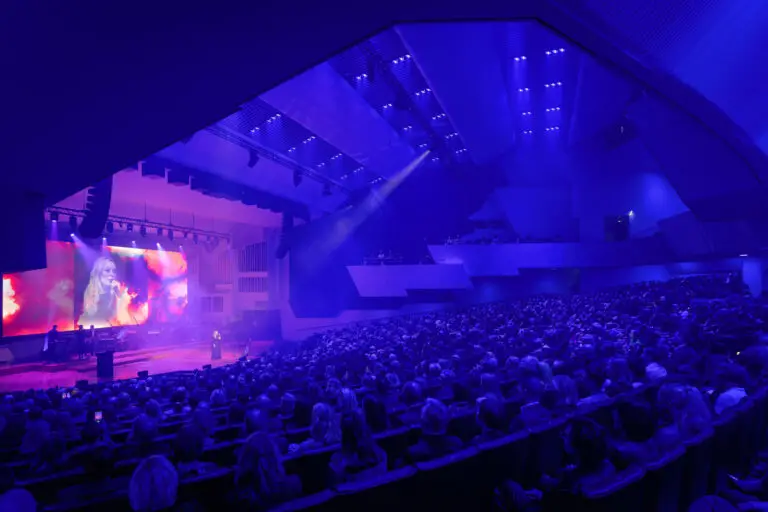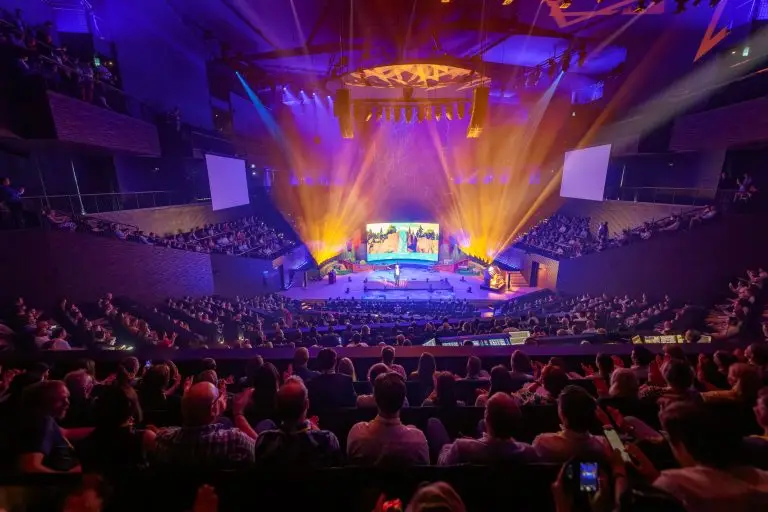When selecting a place or venue for a digital event, objectives and effectiveness should be kept in mind, and technology should not be the defining factor.
When talking about events conducted over a network and virtually, the discussion often turns to technology and platforms. There are numerous options for organising events in a digital format, but choosing the most appropriate technical solution is not always easy.
“In digital events, you can think of the technical solution that enables remote participation as the venue,” says Jarkko Kivikoski, Business Director at Woltti Group.
The selection of premises – which means the selection of a technical solution in the case of digital events – depends on the objectives, content and guests of the event.
“To launch a car, you need a venue big enough for cars. A 1,000-person seminar requires premises where everyone can be seated. The same logic applies to digital events. Our job is to help you choose the most appropriate technical solutions for each event instead of recommending one platform for everyone.”
There is a digital solution for most needs
The unique impact of events comes from a sense of belonging and interaction with others. Even if this is not fully achieved remotely, there are functional solutions for most needs that enable an event to be organised either fully digital or hybrid, combining on-site participants and remote participation.
“At present, companies have the greatest need to communicate with their own stakeholders and staff in a high-quality and cost-effective way over the network, allowing for an opportunity to discuss the content of the discussion and have spontaneous interactions. A lot can be done through existing channels, or an event can be organised as a webinar that allows the audience to participate,” says Jarkko Kivikoski.
Kivikoski’s message is that a suitable platform and technical solution can always be found. However, the content and the experience of the participants still need to be the starting points when planning an event. The most important thing is to get people excited.
“Today there is a huge number of webinars in which clearly nobody has stopped to think about what is being offered to the customers. Are we creating an experience for the customer or sharing information. If the goal is sales and customer engagement, the event should serve as a catalyst or stimulus to contact you. So it should be designed so that the seller can contact the customer after the event in a natural way and ask if he or she got the food home and liked it.”
The contents of a digital event must be planned with particular care
The contents of the digital event require a unique kind of planning. A good rule of thumb is the 10-minute golden rule: the people participating through a stream should be activated every 10 minutes to keep them engaged and to keep the content interesting enough to follow.
The roles of the presenter and scriptwriter are even more important in digital events. Woltti Group’s Project Director Jukka Kosunen compares digital events to TV talk shows. The beginning must be exciting and there must be elements that maintain interest.
It’s a good idea to engage participants in digital events by tailoring content and listening carefully to the needs and wishes of the participants.
“Information about interests can be gathered from participants in advance. When people have given something, they also become more engaged,” Kosunen says.
“Participants can also be asked to choose topics of interest from among options that are given in advance before they enter the event. This makes it possible to provide them with preferred content. At the same time, it makes it possible to match people with others who are interested in the same things.”
Virtual events enable an experience of spontaneity
None of the existing digital event participation technologies can entirely replace the experience of a live event as such.
“Three weeks from now, we will host a 3D mini-fair in which stands and other semi-fixed virtual solutions will be made. The technical side of a digital fair can be implemented fully, but the response of the participants in the new situation is another matter, no one has actual experience with it,” Kosunen says.
The most impactful experiences arise when people actually interact with each other. If that is not possible, platforms based on 3D and game engines offer the most opportunities for a shared experience.
“The participant participates virtually through an avatar or other character, for instance, and can choose what they do and with whom. Virtual events are not designed in the same way as games and game worlds, but they should be able to import the elements of free movement that exist in them to events.”
When selecting technical solutions, it is also important to take into account the technical capabilities of the participant.
“If participation requires downloading an app or technical gadgets, it limits participation. In most cases, solutions need to be browser-based and can be used by everyone. That’s why the 3D environment we use at trade shows requires a good internet connection and headphones, but nothing more.”
Hybrid events are here to stay
In principle, organising an event as a digital and physical one at the same time does not require more resources than an event that is only physical. The most important thing in the content and communication of an event is to consider the ability to participate remotely. The presentation technology of the space used in an event – displays, lights, and audio – must also be good enough to enable high quality filming and streaming of the event.
However, pre-planning is required for the organisation of hybrid events. In a physical event, safety issues related to viruses must be taken into account, and the arrangements must be done with care to prevent infection.
Activations of participants designed for a digital event can also be an interesting addition to those who are on site. In the future, it will also be a good idea to have enough screens at physical events to see those who are participating remotely.
“It is not a bad idea to bring activating elements to physical events that occur as frequently as required for online events,” Kosunen says.
“If it is clear that the event is attended both on site and from homes, some kind of event app is essential. It allows you to send private messages to others during an event and connect the participants no matter where they are. There are a number of technical solutions for this, and we use the ones that work the best.”
Jarkko Kivikoski points out that digital event production is not difficult.
“We are currently doing digital events from studio environments, from our own office studio and flexibly from the customer’s premises. The content, objectives and budget determine the way the implementation is implemented. The most important thing is to consider what the event should accomplish. Our expertise is to present the options for technical solutions, and together we choose the best ones.”
Want to learn more about digital or hybrid events? Contact jarkko.kivikoski@wolttigroup.fi or jukka.kosunen@wolttigroup.fi


